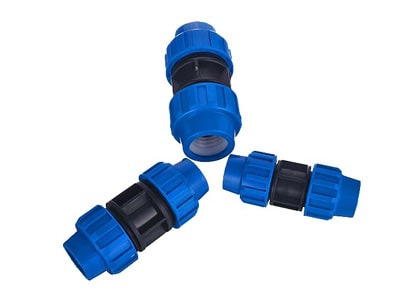When comparing polyethylene pipe vs PEX, it’s important to consider their properties, applications, advantages, and disadvantages. Both materials are widely used in plumbing and irrigation systems, but they serve different purposes and have unique characteristics. Polyethylene pipes are known for their flexibility, durability, and resistance to chemicals, making them ideal for underground installations and large-scale water distribution. On the other hand, PEX pipes are prized for their ease of installation, resistance to freezing, and suitability for both hot and cold water plumbing inside buildings. Understanding the key differences between polyethylene and PEX pipes can help homeowners, contractors, and engineers make informed decisions about which material is best suited for their specific needs.
polyethylene vs pex
1. Material Composition
Polyethylene pipe, constructed from either high-density polyethylene (HDPE) or low-density polyethylene (LDPE), is recognized for its inherent flexibility and exceptional resistance to corrosion. This material is widely utilized in various applications due to its durability and adaptability.
PEX, a variant of polyethylene, undergoes a chemical modification process that establishes cross-links among the polymer chains. This alteration significantly improves its mechanical strength and thermal stability, making it a preferred choice for plumbing and heating systems.
2. Applications
Polyethylene pipes, particularly HDPE pipes, are predominantly utilized in the distribution of water, irrigation systems, and gas supply networks. Their design makes them particularly appropriate for underground applications, as they exhibit significant resistance to soil chemicals and possess low permeability.
PEX or cross-linked polyethylene, is frequently employed in residential plumbing for both hot and cold water supply lines. Its inherent flexibility and straightforward installation process render it an excellent choice for retrofitting existing plumbing infrastructures.


3. Advantages
Polyethylene pipes exhibit remarkable durability, as they are impervious to rust, corrosion, and various chemical agents. Their lightweight nature facilitates easier handling and transportation than traditional metal piping. Additionally, they are often more economical, presenting lower upfront material costs.
PEX pipes are characterized by their flexibility, allowing them to navigate corners without the need for additional fittings, which minimizes the number of joints required. They also possess excellent thermal resistance, enabling them to endure elevated temperatures, making them ideal for hot water systems. Furthermore, PEX pipes demonstrate frost resistance, as they can expand slightly when frozen, thereby mitigating the risk of rupture.
4. Disadvantages
Polyethylene Pipe exhibits sensitivity to ultraviolet (UV) radiation, which can result in degradation upon prolonged exposure to sunlight. Consequently, it is often necessary to either bury the pipe or apply protective coatings to mitigate this issue. Additionally, its operational temperature range is restricted, rendering it unsuitable for applications involving elevated temperatures.
In contrast, PEX possesses a notable characteristic of oxygen permeability, permitting oxygen to infiltrate the pipe. This can potentially induce corrosion in adjacent metal components if adequate precautions are not taken. Furthermore, PEX tends to be more costly compared to conventional polyethylene piping, which may influence its selection in various applications.
Summary Table
| Feature | Polyethylene Pipe | PEX |
| Material Composition | HDPE or LDPE | Cross-linked polyethylene |
| Primary Applications | Water distribution, irrigation | Residential plumbing |
| Flexibility | Moderate | High |
| Temperature Resistance | Limited | High |
| UV Resistance | Poor (degrades in sunlight) | Good (not UV sensitive) |
| Cost | Generally lower | Generally higher |
Polyethylene pipe vs pex cost
Cross-linked polyethylene typically incurs higher material costs compared to standard polyethylene pipes; however, its installation may be more economical than other piping alternatives. The price of PEX pipes ranges from $0.40 to $2.50 per linear foot, influenced by factors such as size, color, and brand. Installation expenses can fluctuate based on the complexity of the project and local labor rates, with homeowners generally facing costs between $1,500 and $3,000 for a full PEX installation.
When considering repiping, utilizing PEX can result in significant savings, often ranging from $2,000 to $5,000 less than other materials. For instance, replacing plumbing in a two-bathroom residence with copper may cost between $8,000 and $10,000, while opting for PEX could reduce that expense to approximately $4,000 to $6,000. PEX is known for its durability and flexibility, which minimize susceptibility to corrosion and damage. However, it is important to note that PEX is not suitable for outdoor applications due to its inability to withstand UV exposure. While PVC pipes are generally the most affordable option, they are not recommended for use with drinking water or hot water systems.
Polyethylene pipe vs pex fittings
Polyethylene pipes and PEX fittings represent distinct categories of plastic piping materials, each tailored for specific applications and exhibiting unique properties. Polyethylene pipes are characterized by their flexibility, enabling them to endure temperature variations and ground movements. Their cost-effectiveness and versatility make them suitable for a wide range of piping applications.
Conversely, PEX fittings are designed for installation in confined spaces and are notable for their resistance to corrosion, particularly from chlorine, making them advantageous for water supply systems in both new constructions and renovations. However, they are not recommended for outdoor applications and necessitate specialized tools and connectors for proper installation. PEX fittings are available in various materials, including brass and plastic, and their prices can range from $0.50 to $10, depending on the specific type and brand.


conclusion
In conclusion, the choice between Polyethylene pipe to PEX depends on the specific application requirements. Polyethylene is often favored for underground and agricultural uses due to its durability and cost-effectiveness. In contrast, PEX is preferred for indoor plumbing systems due to its flexibility, ease of installation, and ability to handle varying temperatures.






Leave A Comment